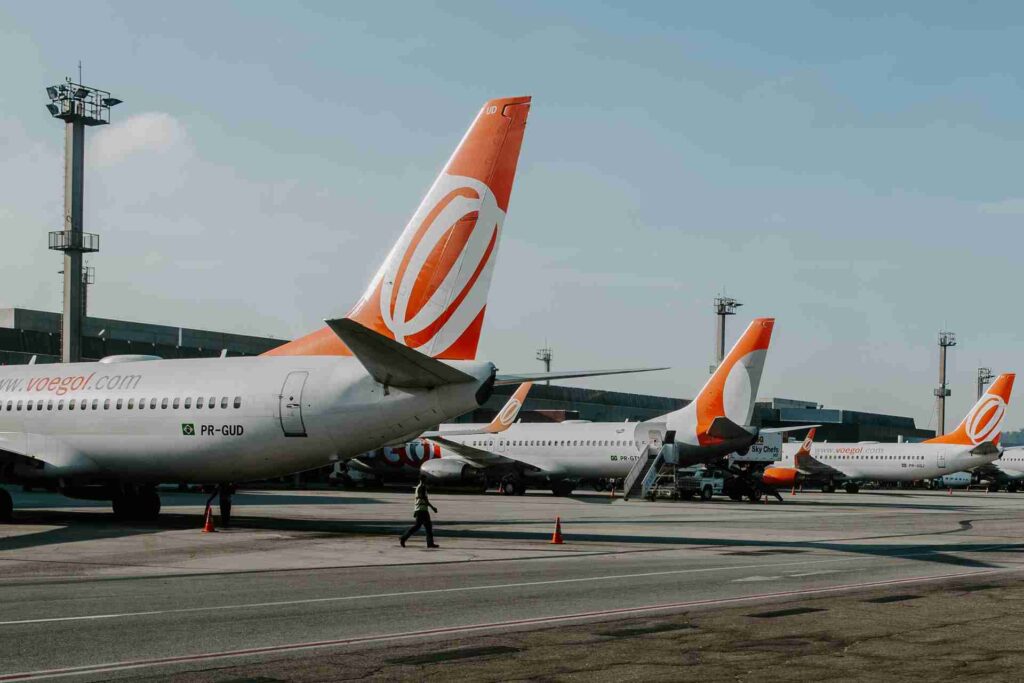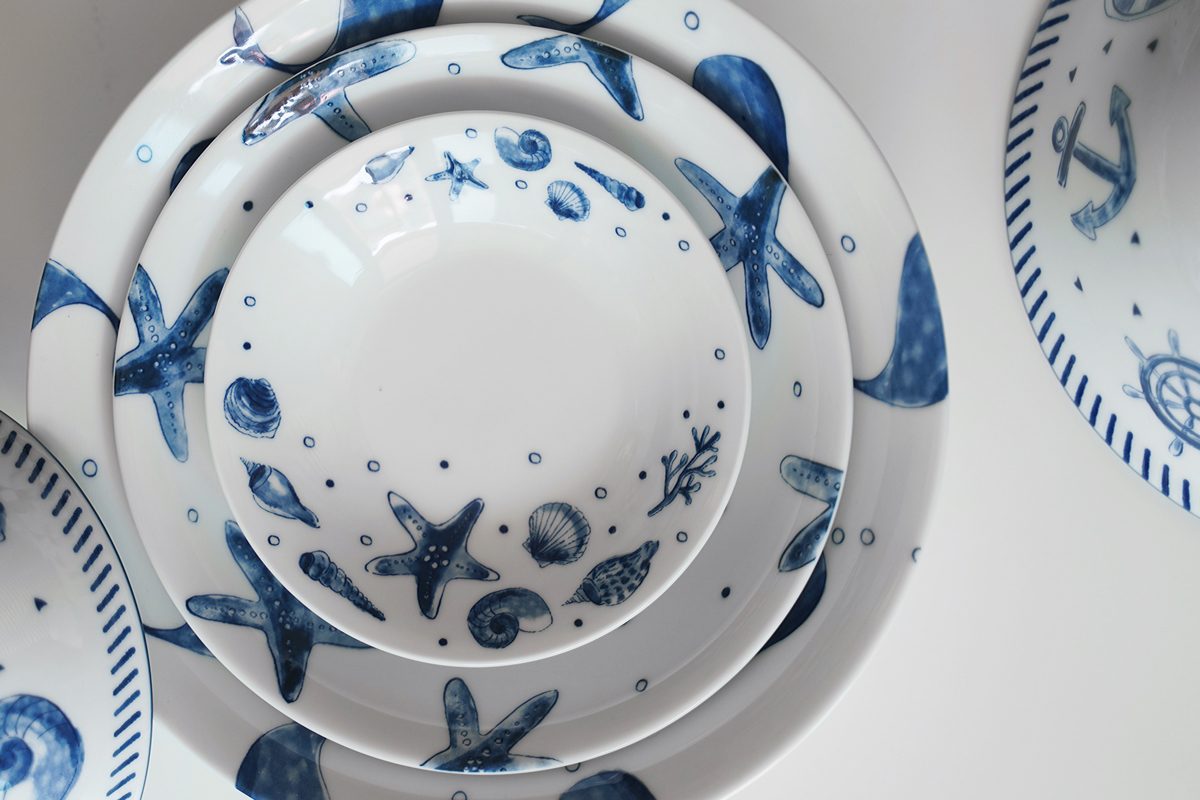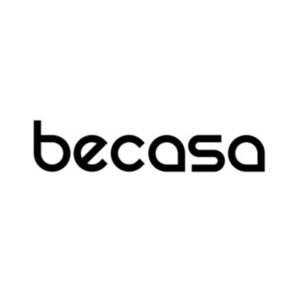In airplane cabins, airline meals are a crucial point of interaction between passengers and airline services, and good airline tableware design can provide passengers with a positive impression of the airline’s service quality. The table setting is a representation of food culture, and pairing certain dishes with certain table settings can have significant artistic, aesthetically pleasing, and commercial effects. Modern dinnerware design styles are proliferating and lining up, and well-designed aviation dinnerware can boost brand value for businesses that provide civil aviation services.
Designing airline dinnerware is the key driver of the civil aviation catering sector and goes hand in hand with the growth and innovation of airline catering services. In addition to the fundamental usage of dinnerware, it also provides sufficient information to affect how individuals behave when they eat.

What materials are available for aviation tableware?
Airline tableware sets generally include food trays, hot meal casseroles, coffee mugs, salad bowls, plates, and flatware sets. Generally, airline lunch boxes used on airplanes need to be lightweight, heatable, environmentally friendly, and economical. So the common tableware materials are stainless steel, ceramic, dense amine, and aluminum foil.
Stainless steel dinnerware: corrosion-resistant, not easy to break, easy to clean. Especially the airline tableware, most of them are made of stainless steel, easy to clean, easy to maintain, and easy to carry.
Melamine tableware: also known as imitation porcelain tableware, heated and pressed by the powder of melamine resin. With its light, beauty can withstand low temperatures, durability, and other properties are widely used in the fast food industry and children’s diet industry, etc. It is also one of the good choices of airline tableware.
Ceramic tableware: generally there are two kinds of materials: stoneware and porcelain. In addition to high-temperature heating and elegant appearance, ceramic tableware can also enhance the airline’s brand image. Generally, business class and first class tableware will be used in a variety of high-grade bone china. However, the cost of ceramic tableware is very high, it is impossible to use it all at once. So also need to be cleaned in a timely manner, so cleaning costs will also be higher. In addition, ceramic utensils are heavier and will increase aircraft fuel.
Aluminum foil tableware: easy to use, easy to shape, safe and hygienic, no odor, no leakage. And it has good and even heats conductivity and heating effect. It can be used in ovens, ovens, steamers, and other heat sources, and heated directly on the original packaging. The aluminum foil lunch box can withstand high temperatures of more than 240 degrees. This material of meal boxes has now become the first choice of many airlines.
How to use airline tableware to create differentiated services?
Airline tableware mainly includes the main dinner plate, secondary dinner plate, small shallow plate, beverage cup, spoon, chopsticks, etc. However, due to the limitation of the aircraft itself, the aviation tableware requirements should be small in size, easy to stack, light in weight, easy to recycle, and other characteristics, but also in line with the size specifications of the standard dining car. Therefore, under the limitation of these conditions, it is also necessary to take into account the aesthetics, which brings no small challenge to the designers.
At present, most airlines are not aware of the significance and importance of airline tableware design. Therefore, if you are about to design airline tableware, the following aspects are important to consider.
Space utilization of meal boxes
For the space layout of civil aircraft, the size of the dining table varies from aircraft type to aircraft type. How to give passengers a comfortable user experience within the limited size is an important direction for the design of airline tableware products. And, how to save space, reduce weight, easy to recycle, and clean, these aspects are also the problems that need to be solved when designing airline tableware.
Localized design elements
The concept of localization is closely related to the concept of internationalization and globalization. Facing passengers from all over the world, airline tableware becomes an important carrier for spreading national culture, emotion, and ideals while realizing its function. At this stage, most of the airline tableware is still only distinguished by the corporate logo and font symbols. There is not much difference in the appearance and design of tableware.
In the international context of the global era, how integrating local cultural elements into the design of tableware has become an important direction for designers to explore.
For example, this business-class tableware was designed by Dutch product designer Marcel Wanders for KLM. The design is inspired by the lace pattern in the Dutch traditional costume. In the whole set of tableware designs, the element of lace is cleverly integrated with the techniques of embossing, embossing, dark pattern, and printing. Even when paired with a three-star Michelin meal, it can perfectly show the exquisite dishes. This fully reveals the elegant sentiment of “food needs beautiful utensils” and brings the brand image of KLM to a higher level.
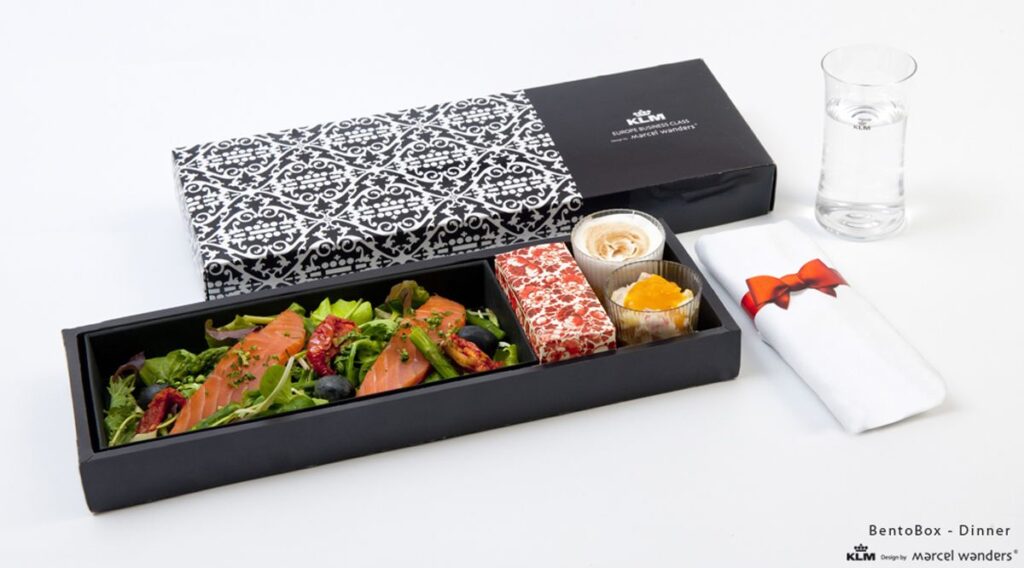
Emotional design
Tableware itself is neutral from the point of view of form and function and does not have emotion. However, the designer should make the tableware design reflect more commercial value factors and have emotional connotations so that people use of tableware to produce interactive emotional factors, causing emotional resonance. This can make passengers get more experience and interaction while dining, and make the airline’s brand image more deeply into the hearts of passengers.
Therefore, in addition to the dining function, the design of airline tableware also requires the design to reflect the corporate culture of the airline and make passengers feel comfortable and happy.
Sustainable Design Trends
The principles of green design are recognized as the “3R” principles, i.e. Reduce, Reuse, Recycle, reduce environmental pollution, reduce energy consumption, and recycle products and parts. Therefore, aviation tableware should incorporate sustainable design into its design. Through different materials to compare and try, slowly change people’s understanding and concepts, to achieve qualitative change.
For example, designer Eugeni Quitllet’s “flight tableware” for Air France is made of flexible and malleable polystyrene and PP polypropylene. In addition to the choice of materials, the designer also cleverly designed the shape of the tableware to resemble the wings and fuselage of an aircraft. And also can be assembled into the shape of an aircraft, very popular with children. This tableware is made of partially recyclable materials. Each set of tableware saves nearly 30% of raw materials. It will save 40 tons of material resources every year. It meets the requirements of both weight reduction and sustainable design for civil aircraft.
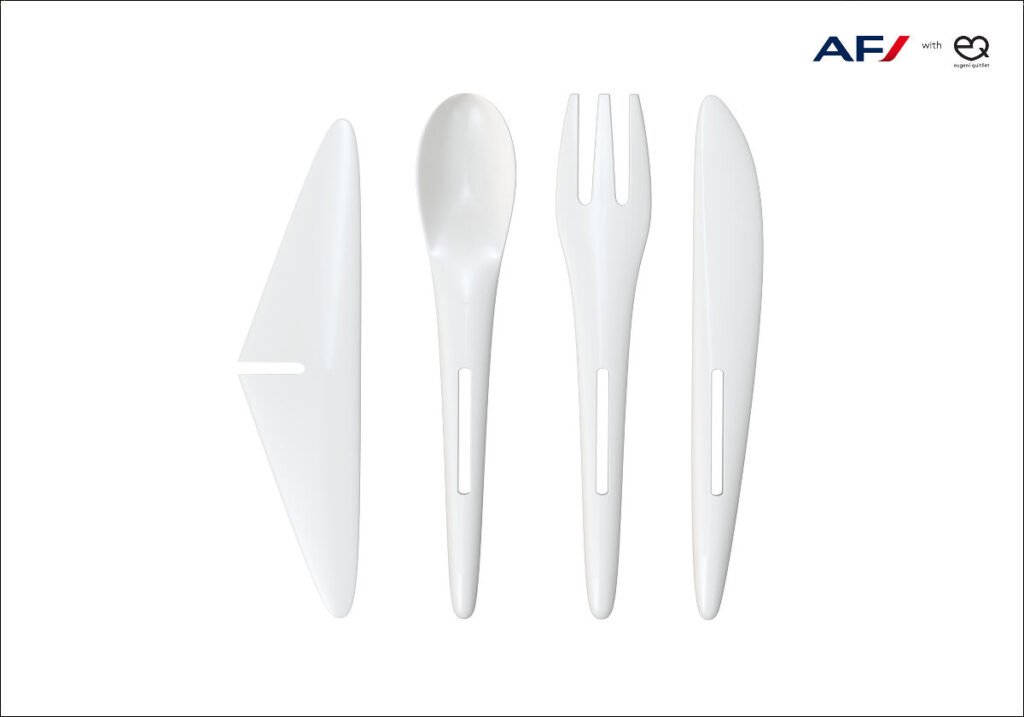
If I were an airline, how would I find the right manufacturer to make my custom tableware?
First of all, the manufacturer must have all the basic certificates, such as iso9001, 14001, etc. Secondly, it is best if the manufacturer has previous experience in producing similar products. For example, Becasa Porcelain has been manufacturing and supplying a wide range of ceramic tableware for domestic and international airlines. Finally, the quality of the manufacturer’s products should be evaluated. As we all know, the requirements for airline tableware are very strict, so this requires the manufacturer to be able to produce a product of the highest quality.


